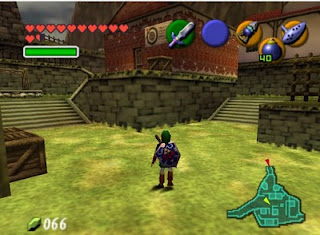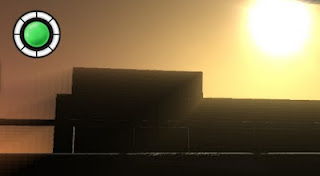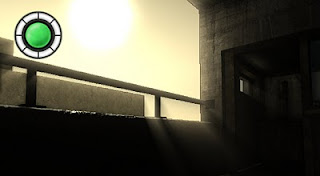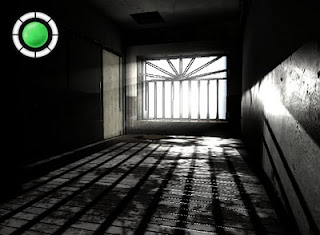Hmm, nothing fancy to report this week. I spend most of my precious time on the toilet this week. Too much jalapeenos or something. And fixed a few software bugs that were at least as annoying as my endless sanitary visit. Just one of those weeks where nothing works well.
I did some stuff on paper though; map design. At some point you need to proceed and create some actual game-content, or at least a prototype of it. Making a single good looking, isolated test-map is pretty easy. But how the hell to create a complete world that should cover hours of solid gameplay? Games are for little kids, bla bla, but the design process is at least as complicated as writing a book or moviescript. Not only the technical part. Choosing fascinating scenes (filmset), making up a game idea that is enjoyable (plot/genre), writing a smart story (script), using cool characters (actors), supportive graphics, sound and music, and so on.
That's why most games (and movies) copy proven concepts from each other. For example, it turned out that 2 hands in front of a camera, a shotgun, and a bunch of demons or chattering soldiers is a guarantee for success. But what if you're trying something new? Not that every single piece I had in mind has never been done before, but there is not much reference when it comes to some of the key gameplay elements, and neither for the environment. When making a map, you deal with lots of factors at the same time. Especially when doing an adventure/puzzle game like Zelda, Metroid or Resident Evil (earlier versions). To give you an idea:
- Not too small, not too big When I buy a game, I'd like to be entertained for ~12 hours, AT LEAST. Games tend to get shorter and easier though. Developers get lazy, and/or games are targetted for the "casual gamer" (bleh) instead of hardcore Japanese who can finish Super Metroid within 20 minutes while doing a sushi contest. But yet another reason, making high quality content has become a lot harder. 30 years ago a hobbyist could draw Pac-Man out of 6 pixels on a sunday evening. These days each model, map, sound effect or texture is a piece of art on its own.
In some cases the player needs to feel attached to the maps as well. To give you that "honey, I'm home" feeling (Zelda villages). Or in case of a horror game, to provide the player with (false) knowledge of the environment. Fear often lies in the knowledge something bad may happen, rather than the graphic scenes them selves. However, the bigger the maps, the less knowledge the player has about the individual locations. Bigger is not always better.
 - Let the maps Serve your type of gameplay
- Let the maps Serve your type of gameplayWhen making an action shooter, you need obstacles, objects to take cover, and eventually multiple routes to assault the enemy. When making Super Mario, you need platforms, pits and plumbing pipes. A race game requires a curvy circuit. If you don't, the gameplay will fail, completely.
- Serve the story / set the athmosphereWhen the story plays an important role, the maps will need to support that as well of course. Resident Evil cannot do without the scary underground labs. And what would Star Wars be without the wild variation of planets?
- Please the eyeAs you may have noticed, this game will take place in a skyscraper. But making 100 levels made of appartments, elevators and corridors is... boring. Make sure there is enough variation and "wows!" to drag the player through the game. Screenshots of dusty corridors alone won't attract anyone.
-
Respect the themeAt the same time, stay close enough with the main theme. You don't want Star Destroyers in cowboy games. Silent Hill is scary, Metroid is a lonely sci-fi adventure, Zelda feels like a fairy tail, WO II: "Battle of the Bulge" is about... WO II, Battle of the Bulge. And guess what "Need for Speed is all about". Mixing up just any idea you may have is not going to work. Keep consistent. Sounds logical, but at the design phase you often get biased on ideas that may not really fit in the story.
 - Horrific
- HorrificAs for our horror theme, well, it needs to keep you feel unpleasant all the time. Resident Evil 5 is a fun game, but I won't call it horror anymore. Zombies on motorcycles with rocket launchers? Come on. And how many scary movies have there been made the last 10 years anyway? In fact there were 2 or 3 "Scary Movies", but let's forget those quickly. Making someone feel truly scared is maybe even more difficult than making someone cry or laugh his pants off. The game maps needs to build constant tension. But one wrong decision can break this feeling. Just making a bloody stinky map doesn't work for long either. Humans quickly adapt to the situation you know.
- Make it smartJust like in Metroid or Zelda, this game has puzzle elements and backtracing. Find a grapple beam on one side of the world, use it on the other side. The placement of items, locked doors and hidden sections must be done with great care. In some games the puzzles or secret sections are too obvious, resulting in an easy, not challenging game. At the same time, make sure backtracing doesn't get annoying. Make sure the already visited area's will keep surprising by introducing new stuff or allowing you to use your new abilities / items each time you return.
- Spread the butterWhen drawing your first map, be carefull not to put all the cream here already, or you will run out of ammo soon. People don't like movies that start spectacular and then fall back long-winded. Create a couple of climaxes and let the game/maps bring you there smoothly.
Well, imagine to keep all those factors in mind at the same time, then draw a map... Good luck! Allright, another long post finished. I didn't have new graphical content, so here's a screenshot from my earlier engine. The shot is more than 3 years old, but still a nice one.












